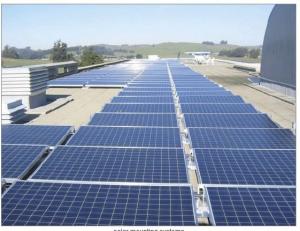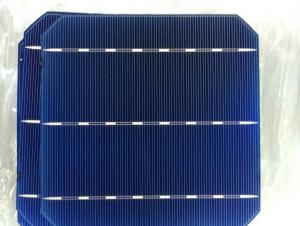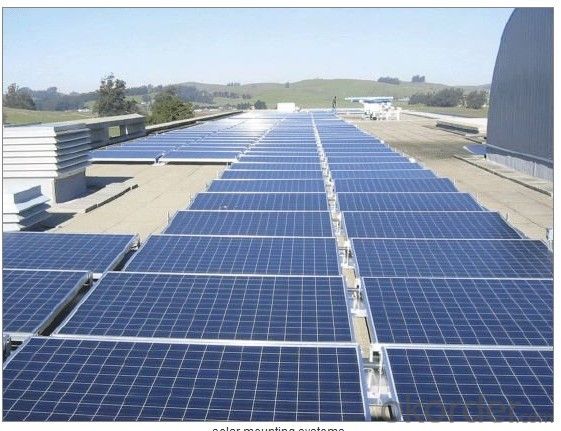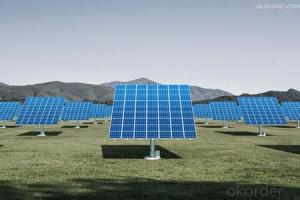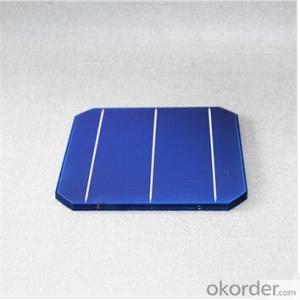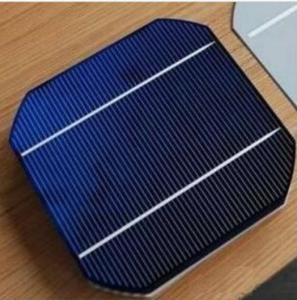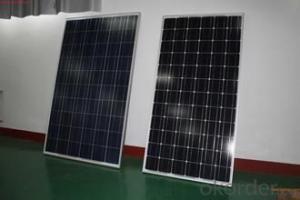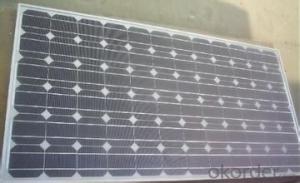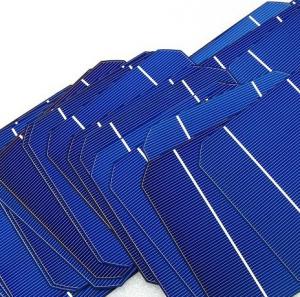Laser Scribing Monocrystalline Silicon Solar Cells
- Loading Port:
- China Main Port
- Payment Terms:
- TT or LC
- Min Order Qty:
- -
- Supply Capability:
- -
OKorder Service Pledge
OKorder Financial Service
You Might Also Like
Quick Details
| Model Number: | monocrystalline solar cell 156x156 | ||||
| Material: | Monocrystalline Silicon | Size: | 156x156mm | Number of Cells: | 1 |
| Max. Power: | 4.6 | Color: | Blue | Main Bus bar: | 3BB |
| Grade: | B-Grade | Thickness: | 180/200 ± 20μm | Voltage: | 0.508V-0.53V |
| Efficiency: | 19.26% | Product: | In stock | Trade term: | Exw Shenzhen |
Packaging & Delivery
| Packaging Detail: | Neutral package |
| Delivery Detail: | 8-15 working days |
Specifications
1) Buy solar cells
2) mono solar cells
3) monocrystalline silicon solar cell price
4) Manufacturer Price
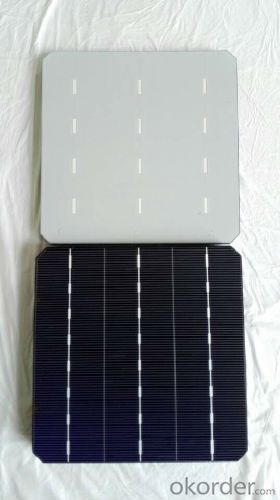
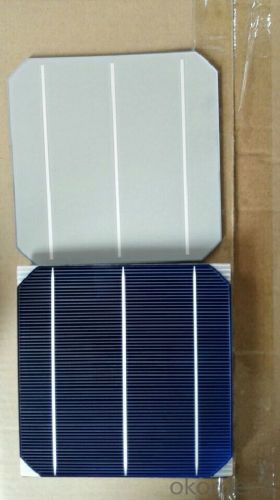
Most solar modules are currently produced from crystalline silicon (c-Si) solar cells made of multicrystalline and monocrystalline silicon. In 2013, crystalline silicon accounted for more than 90 percent of worldwide PV production, while the rest of the overall market is made up of thin-film technologies using cadmium telluride, CIGS and amorphous silicon Emerging, third generation solar technologies use advanced thin-film cells. They produce a relatively high-efficiency conversion for the low cost compared to other solar technologies. Also, high-cost, high-efficiency, and close-packed rectangular multi-junction (MJ) cells are preferably used in solar panels on spacecraft, as they offer the highest ratio of generated power per kilogram lifted into space. MJ-cells are compound semiconductors and made of gallium arsenide (GaAs) and other semiconductor materials. Another emerging PV technology using MJ-cells is concentrator photovoltaics (CPV).
- Q: Can solar cells be used on airplanes?
- Yes, solar cells can be used on airplanes. In fact, solar-powered airplanes have been developed and successfully flown, demonstrating the feasibility of harnessing solar energy for aircraft propulsion. Solar cells can be integrated into the wings or body of the airplane to capture sunlight and convert it into electrical energy, reducing reliance on traditional fuel sources and making air travel more sustainable.
- Q: What is the role of disconnect switches in solar cell systems?
- Disconnect switches in solar cell systems serve as a crucial safety measure by providing a means to isolate the solar panels from the electrical grid. They allow for the safe maintenance, repair, or replacement of solar components without the risk of electrical shock or damage. Additionally, disconnect switches enable efficient troubleshooting and troubleshooting of solar systems by allowing technicians to isolate specific sections of the system for inspection or repair.
- Q: Can solar cells be used for water desalination?
- Yes, solar cells can be used for water desalination. Solar-powered desalination systems harness the energy from sunlight to convert seawater or brackish water into fresh water. This process is known as solar desalination and involves using solar panels to generate electricity, which in turn powers the desalination system. Solar desalination offers a sustainable and environmentally-friendly solution to address water scarcity in regions with abundant sunlight.
- Q: Can solar cells be used in agricultural farms?
- Yes, solar cells can be used in agricultural farms. They can be installed on rooftops or open fields to generate clean and renewable energy. This energy can be utilized to power various agricultural operations such as irrigation systems, lighting, and machinery. Additionally, solar cells can help farms become more self-sufficient and reduce their reliance on traditional energy sources, thereby contributing to sustainable farming practices.
- Q: Can solar cells be used in remote sensing devices?
- Yes, solar cells can be used in remote sensing devices. Solar cells are capable of converting sunlight into electricity, making them an ideal power source for remote sensing devices that require continuous operation in areas where traditional power sources are unavailable or impractical to use.
- Q: What is the role of silicon in solar cells?
- The role of silicon in solar cells is to act as a semiconductor material that can absorb sunlight and convert it into electricity through the photovoltaic effect. Silicon is the most commonly used material in solar cell manufacturing due to its abundance, stability, and ability to efficiently convert sunlight into electricity. It forms the basis of the p-n junction, which allows for the separation and movement of electrons and holes, generating an electric current.
- Q: How do solar cells perform in areas with high humidity and saltwater exposure?
- Solar cells generally perform well in areas with high humidity and saltwater exposure. While high humidity can slightly reduce the efficiency of solar cells, it does not significantly impact their overall performance. However, saltwater exposure can potentially pose a challenge as it can corrode the metal components of the solar panels over time. To mitigate this, manufacturers often use materials that are resistant to corrosion and apply protective coatings on the panels. Regular maintenance and cleaning can also help to ensure the optimal performance and longevity of solar cells in such environments.
- Q: Can solar cells be used in desert areas?
- Yes, solar cells can be used in desert areas. In fact, desert regions are ideal for solar energy production due to their high levels of sunlight and low cloud cover. The arid conditions also help keep solar panels clean and free from debris, maximizing their efficiency.
- Q: Can solar cells be used for powering remote surveillance cameras?
- Yes, solar cells can be used to power remote surveillance cameras. Solar cells convert sunlight into electricity, making them a reliable and sustainable energy source for remote locations where power supply may be limited or unavailable. By harnessing solar energy, surveillance cameras can operate continuously without the need for frequent battery replacements or connection to electrical grids.
- Q: Can solar cells be used in electric vehicle charging stations?
- Yes, solar cells can be used in electric vehicle charging stations. Solar panels can generate electricity from sunlight, which can then be used to charge electric vehicles. This provides a sustainable and renewable energy source for charging stations, reducing dependency on traditional power grids and reducing carbon emissions.
Send your message to us
Laser Scribing Monocrystalline Silicon Solar Cells
- Loading Port:
- China Main Port
- Payment Terms:
- TT or LC
- Min Order Qty:
- -
- Supply Capability:
- -
OKorder Service Pledge
OKorder Financial Service
Similar products
Hot products
Hot Searches
Related keywords
